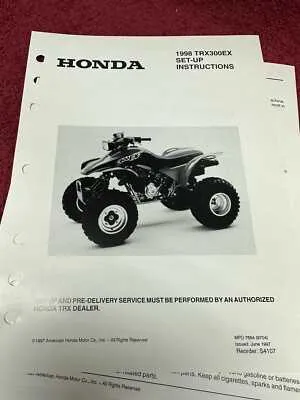
Begin by checking the fuse box located beneath the seat or near the battery compartment. A blown fuse is one of the most common causes of power loss to headlights, starter, or ignition components. Replace any damaged units with exact amperage ratings to avoid circuit overload.
Trace the ignition switch output using a multimeter set to continuity mode. From the key cylinder, follow the main power line to the solenoid input, ensuring a clean connection. Dirty or corroded contacts can mimic electrical failure symptoms.
Inspect the ground paths on the frame and engine block. A faulty ground will interrupt current flow and may result in inconsistent spark or starter engagement. Clean all terminals with a wire brush and apply dielectric grease for protection.
Color codes typically follow standard convention: black or green for earth, red or brown for power, and yellow or blue for lighting and auxiliary components. Refer to the OEM harness map for specific wire-to-function assignments when troubleshooting non-responsive systems.
For lighting circuits, test the handlebar switch assembly. Voltage should be present at the input side when the engine is running and switch is active. If output is absent, replace the control unit or repair internal solder joints if accessible.
Electrical Layout Overview
Start by locating the ignition module near the frame’s front section. The power line from the battery connects directly to the main fuse (15A), which then branches toward the key switch and regulator unit. Ensure the ground wire from the negative terminal is firmly attached to the frame to prevent voltage drops.
Headlamp circuits operate via a handlebar-mounted switch, drawing current from the auxiliary terminal after ignition activation. The lighting connector features three pins: high beam (blue), low beam (white), and ground (green). If the headlight fails, inspect this plug before replacing bulbs.
The engine kill mechanism integrates with the CDI unit. The black/yellow cable sends trigger pulses from the ignition coil, while green/white serves as a shutdown path when the stop switch is engaged. A failed neutral switch or corroded connectors in this loop can prevent starting.
The starter solenoid, found adjacent to the battery box, activates via a yellow/red signal wire coming from the start button. Confirm that this line receives 12V when the button is pressed. If not, test the clutch or brake switch interlocks, as they cut power in unsafe conditions.
For tail lighting, follow the brown wire extending from the rear harness. Brake light activation occurs through either the foot pedal switch or the front lever sensor, feeding voltage via a green/yellow wire to the bulb. Replace inline connectors if flickering occurs under vibration.
Ignition switch wiring configuration and color codes
Connect the black wire with a white stripe directly to the ignition coil feed; it carries switched power from the key assembly. The solid red wire delivers constant 12V from the battery and should be fused for safety. Green indicates chassis ground and must be properly bonded to the frame to ensure circuit completion.
Orange with a white trace typically links to the lighting relay or accessory circuit, activating auxiliary components upon ignition. A solid black line connects to the main fuse input and distributes power to essential systems. Avoid reversing polarity or connecting to incorrect terminals, as this may damage sensitive electronics.
Always test continuity with a multimeter before finalizing connections. Match terminal positions to harness layout: key OFF disconnects all circuits; key ON bridges red to black/white and orange/white. Verify terminal resistance–should be near zero when closed and open when off. Secure connections with waterproof connectors for outdoor durability.
Starter solenoid and battery connection layout
Connect the positive terminal of the power cell directly to the main lug of the relay switch using a heavy-gauge red cable. Ensure the contact is clean and tightly secured to avoid voltage drop or intermittent starting issues.
The secondary lug on the relay must be linked to the terminal post on the cranking motor with a similarly rated cable. This connection carries high current and must be insulated properly to prevent short circuits.
The small control wire from the ignition switch connects to the spade terminal on the solenoid. This wire triggers the internal switch when the key is turned to the start position. Verify that this line delivers 12 volts during cranking.
Secure the negative lead from the power source directly to the frame ground or designated grounding bolt near the engine block. Use a clean, rust-free surface to ensure efficient current return.
Install an inline fuse or fusible link between the power source and the relay input to protect the system against overload. Always double-check polarity and torque all terminals to factory-specified values.
Lighting circuit path from handlebar switch to tail light
- Begin by tracing the yellow wire with red stripe from the multi-function control on the left grip–it carries voltage from the lighting selector.
- This lead connects directly to the main harness junction near the steering column, where it merges with the headlamp and tail illumination feeds.
- From this point, a brown wire branches off and travels along the frame rail toward the rear section, serving as the primary tail lamp supply.
- Midway along the chassis, the brown conductor typically routes through a frame-mounted connector block; check here for corrosion or loose terminals.
- The brown wire continues uninterrupted to the rear fender cavity, where it connects to the socket base of the rear lamp assembly.
- Ground for the tail bulb is established through a green wire bolted to the subframe, ensuring a consistent return path to the negative terminal.
- Verify continuity from the switch terminal (Y/R) to the harness junction with a multimeter.
- Inspect the inline connector at the midpoint for voltage with the switch in ON position.
- Test resistance across the bulb socket to chassis ground to confirm grounding integrity.
- Replace any corroded terminals or brittle sections with waterproof crimp connectors.